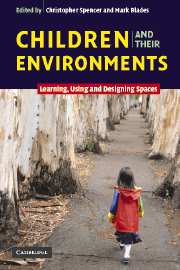32 results
Strategies used for the COVID-OUT decentralized trial of outpatient treatment of SARS-CoV-2
-
- Journal:
- Journal of Clinical and Translational Science / Volume 7 / Issue 1 / 2023
- Published online by Cambridge University Press:
- 07 November 2023, e242
-
- Article
-
- You have access
- Open access
- HTML
- Export citation
Zircon geochronology and Hf isotopic study from the Leo Pargil Dome, India: implications for the palaeogeographic reconstruction and tectonic evolution of a Himalayan gneiss dome
-
- Journal:
- Geological Magazine / Volume 159 / Issue 10 / October 2022
- Published online by Cambridge University Press:
- 11 July 2022, pp. 1681-1698
-
- Article
- Export citation
Properties of the inertial sublayer in adverse pressure-gradient turbulent boundary layers
-
- Journal:
- Journal of Fluid Mechanics / Volume 937 / 25 April 2022
- Published online by Cambridge University Press:
- 02 March 2022, A30
-
- Article
-
- You have access
- Open access
- HTML
- Export citation
Collecting amino acids in the Enceladus plume
-
- Journal:
- International Journal of Astrobiology / Volume 18 / Issue 1 / February 2019
- Published online by Cambridge University Press:
- 28 February 2018, pp. 47-59
-
- Article
- Export citation
A 200,000-Year Record of Change in Oxygen Isotope Composition of Sulfate in a Saline Sediment Core, Death Valley, California
-
- Journal:
- Quaternary Research / Volume 51 / Issue 2 / March 1999
- Published online by Cambridge University Press:
- 20 January 2017, pp. 148-157
-
- Article
- Export citation
Valuing Water Quality Monitoring: A Contingent Valuation Experiment Involving Hypothetical and Real Payments
-
- Journal:
- Agricultural and Resource Economics Review / Volume 27 / Issue 1 / April 1998
- Published online by Cambridge University Press:
- 15 September 2016, pp. 28-42
-
- Article
- Export citation
What Does it Take to Reduce Racial Prejudice in Individual-Level Candidate Evaluations? A Formal Theoretic Perspective*
-
- Journal:
- Political Science Research and Methods / Volume 3 / Issue 1 / January 2015
- Published online by Cambridge University Press:
- 24 July 2014, pp. 1-20
-
- Article
- Export citation
Contributors
-
-
- Book:
- Aquatic Organic Matter Fluorescence
- Published online:
- 05 June 2014
- Print publication:
- 14 July 2014, pp ix-x
-
- Chapter
- Export citation
Contributor affiliations
-
-
- Book:
- Textbook of Neural Repair and Rehabilitation
- Published online:
- 05 May 2014
- Print publication:
- 24 April 2014, pp ix-xvi
-
- Chapter
- Export citation
Contributor affiliations
-
-
- Book:
- Textbook of Neural Repair and Rehabilitation
- Published online:
- 05 June 2014
- Print publication:
- 24 April 2014, pp ix-xvi
-
- Chapter
- Export citation
Contributors
-
-
- Book:
- Translational Neuroscience
- Published online:
- 05 July 2012
- Print publication:
- 28 June 2012, pp vi-viii
-
- Chapter
- Export citation
Contributors
-
-
- Book:
- ADHD in Adults
- Published online:
- 04 April 2011
- Print publication:
- 03 March 2011, pp vii-ix
-
- Chapter
- Export citation
41 - Effect of Epidural Analgesia on Postoperative Outcomes
- from SECTION V - Pain Management and Patient Outcomes
-
-
- Book:
- Acute Pain Management
- Published online:
- 26 October 2009
- Print publication:
- 27 April 2009, pp 637-645
-
- Chapter
- Export citation
Contributors
-
-
- Book:
- Acute Pain Management
- Published online:
- 26 October 2009
- Print publication:
- 27 April 2009, pp vii-xii
-
- Chapter
- Export citation
Vaccenic acid favourably alters immune function in obese JCR:LA-cp rats
-
- Journal:
- British Journal of Nutrition / Volume 102 / Issue 4 / 28 August 2009
- Published online by Cambridge University Press:
- 16 February 2009, pp. 526-536
- Print publication:
- 28 August 2009
-
- Article
-
- You have access
- HTML
- Export citation
The transtheoretical model as applied to dietary behaviour and outcomes
-
- Journal:
- Nutrition Research Reviews / Volume 20 / Issue 1 / June 2007
- Published online by Cambridge University Press:
- 01 June 2007, pp. 46-73
-
- Article
-
- You have access
- HTML
- Export citation
Part I - Children's understanding of places
-
-
- Book:
- Children and their Environments
- Published online:
- 23 October 2009
- Print publication:
- 23 February 2006, pp 11-12
-
- Chapter
- Export citation
3 - Children's understanding of environmental representations: aerial photographs and model towns
-
-
- Book:
- Children and their Environments
- Published online:
- 23 October 2009
- Print publication:
- 23 February 2006, pp 42-56
-
- Chapter
- Export citation
Notes on contributors
-
- Book:
- Children and their Environments
- Published online:
- 23 October 2009
- Print publication:
- 23 February 2006, pp vii-xiv
-
- Chapter
- Export citation

Children and their Environments
- Learning, Using and Designing Spaces
-
- Published online:
- 23 October 2009
- Print publication:
- 23 February 2006









